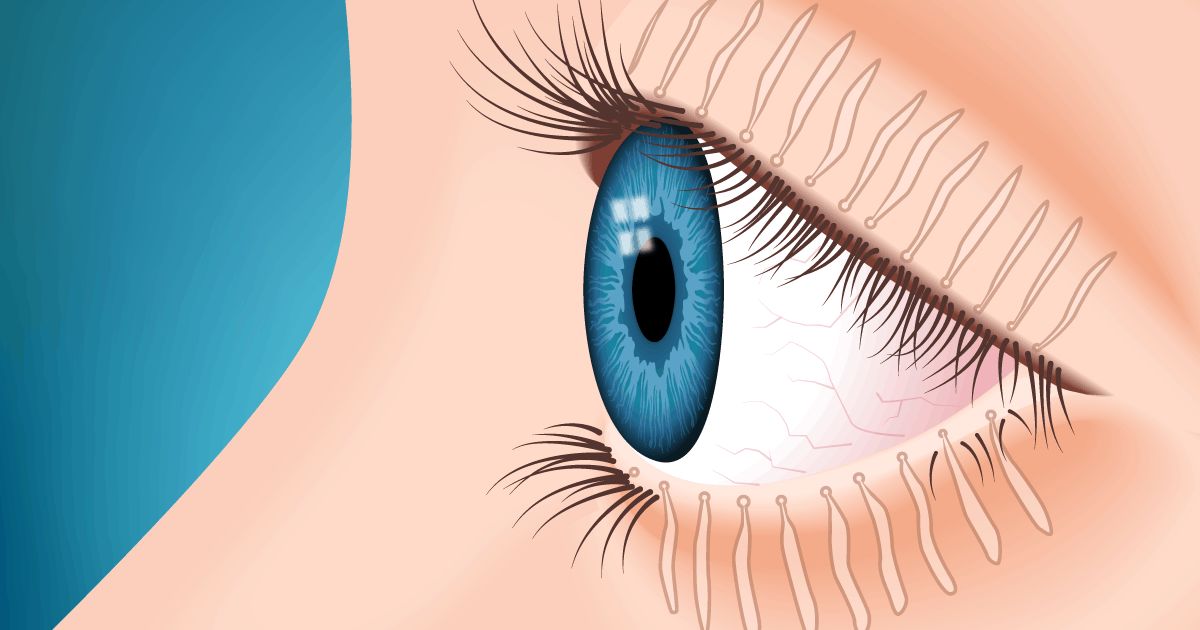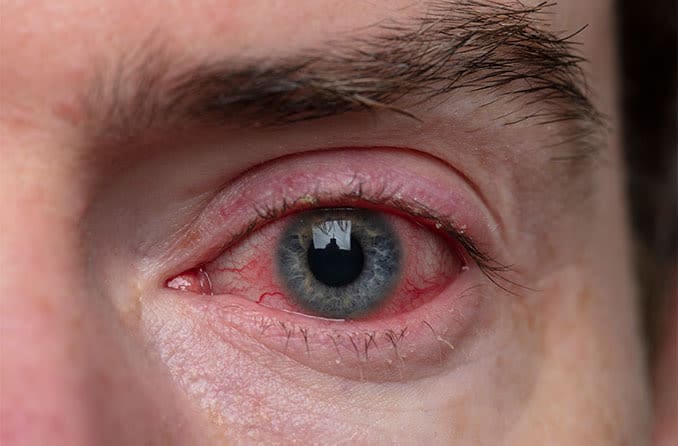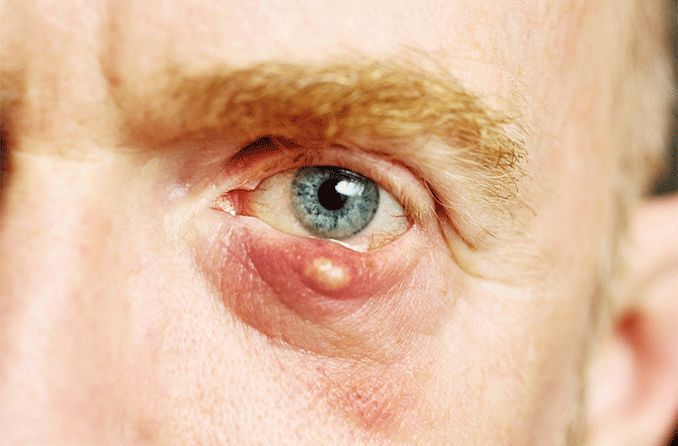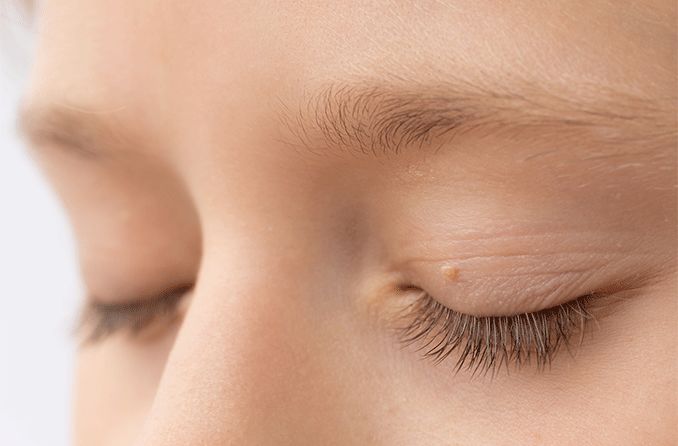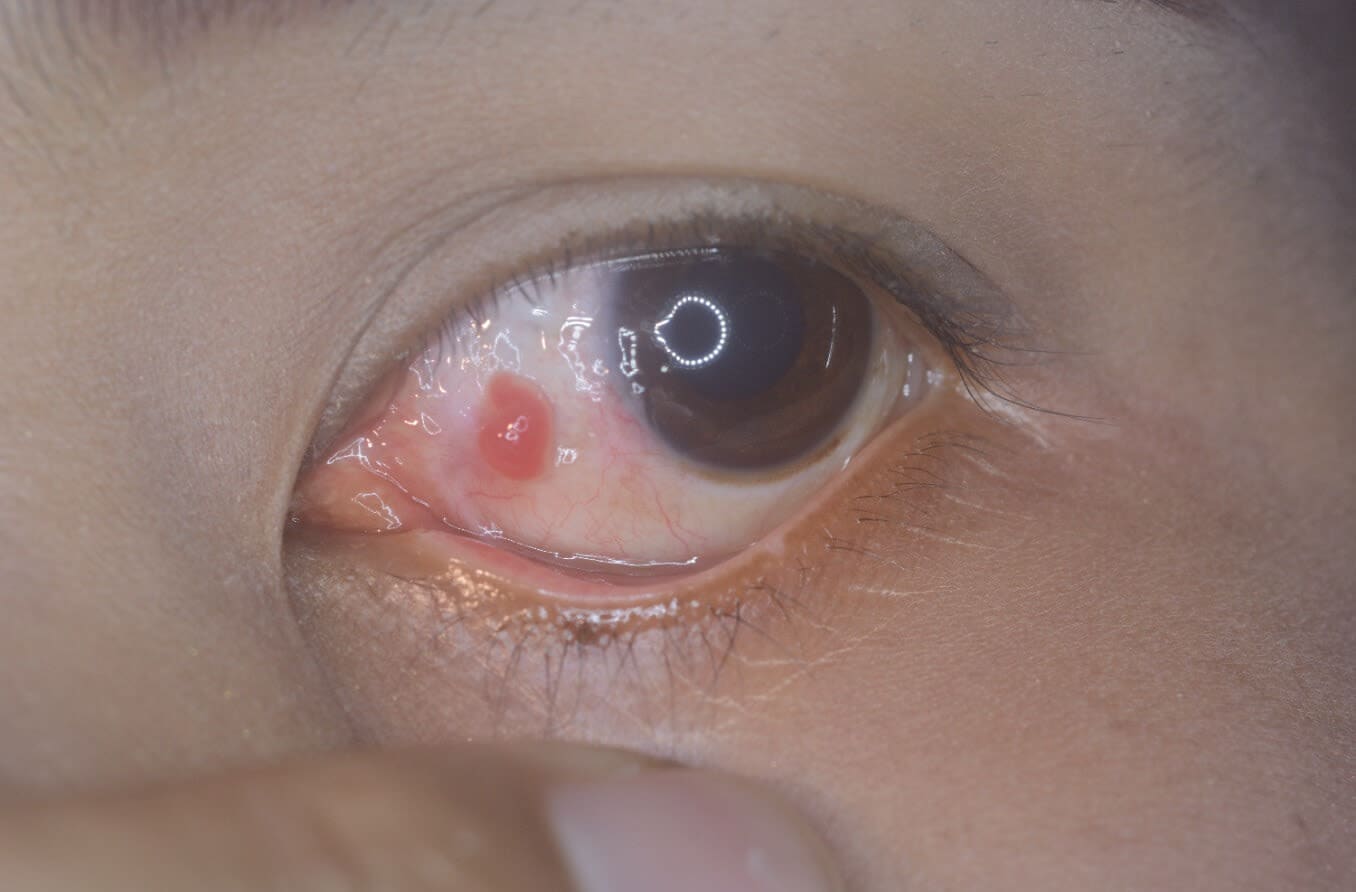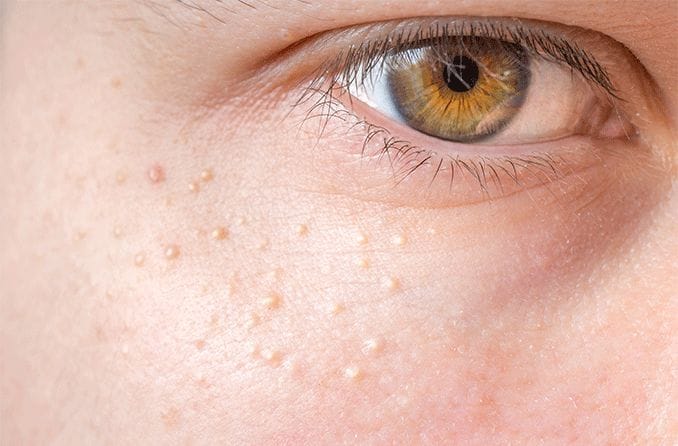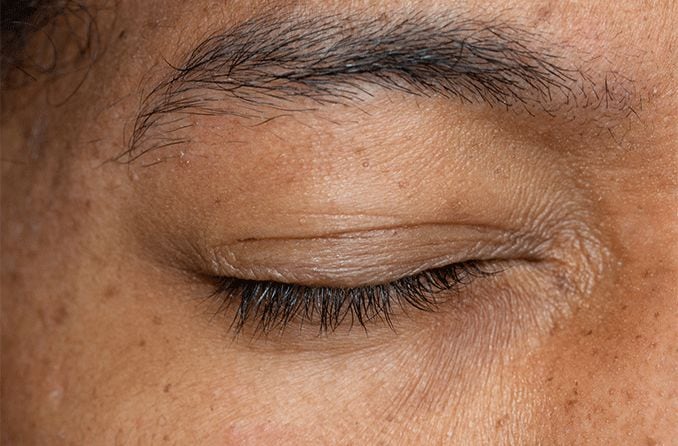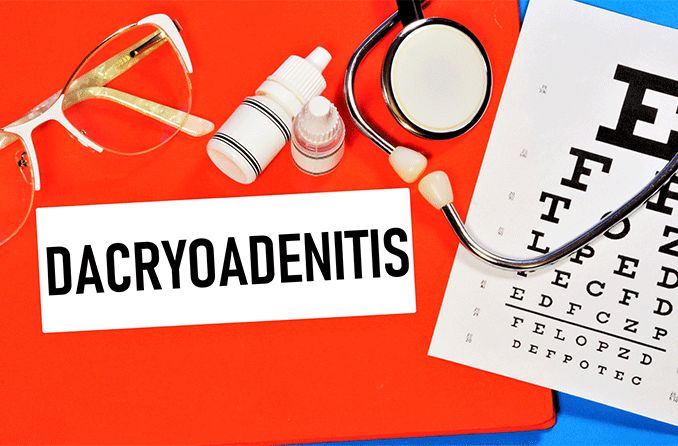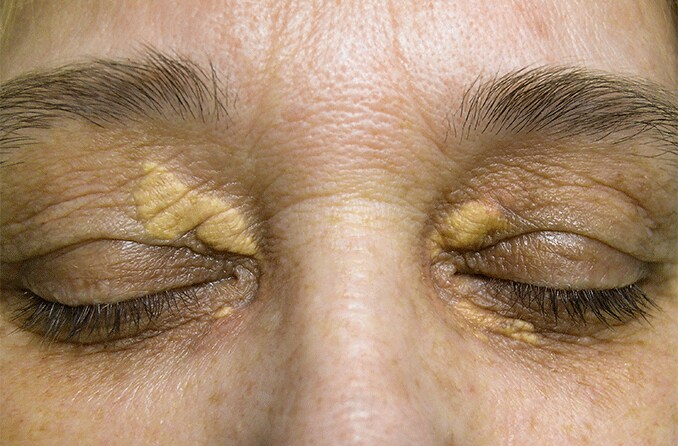Meibomian gland dysfunction: Overview
Meibomian gland dysfunction (MGD) is a very common eye problem. It is inflammation and clogging of small glands in your eyelids that produce the oily layer of your tears . When these meibomian ("my-BOH-me-an") glands get inflamed and clog up, less of this oil ( meibum ) is secreted into the tear film. This causes your tears to evaporate more quickly, resulting in dry, irritated eyes.
Other medical terms for meibomian gland dysfunction are meibomitis and meibomianitis .
Symptoms of meibomian gland dysfunction
In addition to dry eyes , symptoms of meibomian gland dysfunction (MGD) include:
Feeling something is "in" your eye
Intermittent blurry vision
Meibomian gland dysfunction commonly occurs with an eyelid problem called blepharitis , which causes inflamed eyelids and a crusty discharge at the base of the eyelashes .
Styes also frequently occur with MGD, causing a sensitive red bump at the eyelid margin. And sometimes, meibomian gland dysfunction can cause a painless bump inside the eyelid. This is called a meibomian cyst or chalazion .
MGD risk factors
Aging increases your risk of dry eyes and meibomian gland dysfunction. A study of 233 older adults (average age 63) found that 59% had at least one sign of MGD.
Your ethnic background also plays a role. Research has shown up to 69% of Asian populations in Thailand, Japan and China have meibomian gland dysfunction. By comparison, only up to 20% of non-Hispanic whites in the U.S. and Australia have MGD.
Wearing eye makeup is another contributing cause of MGD. Eyeliner and other makeup can clog the openings of meibomian glands. This is especially true if you don't thoroughly clean your eyelids and remove all traces of eye makeup before sleep.
Wearing contacts may aggravate meibomian gland dysfunction. Research has shown that contact lens wear is associated with meibomian glands changes, and these changes remain for up to six months after use of contact lenses is discontinued.
How is MGD detected?
The symptoms of meibomian gland dysfunction are nearly the same as those of dry eye syndrome. Only an eye doctor can tell for sure if you have MGD.
A simple technique your doctor might use to detect MGD is to apply pressure to your eyelid. This is done to express the contents of the meibomian glands. Observing these secretions often can enable a trained eye care professional to determine if you have meibomian gland dysfunction.
Because meibomian gland dysfunction affects the stability of the tear film, your eye doctor also may test the quality, quantity and stability of your tears.
One common test is called the tear breakup time (TBUT) test. This simple, painless procedure involves the application of a small amount of dye to the tear film on the front surface of your eye. Your doctor then examines your eye with a cobalt blue light, which causes your dyed tears to glow. This enables your eye doctor to see how quickly your tear film loses its stability (breaks up) on the surface of your eye.
SEE ALSO: How to use eye drops without spilling them all over your face
Treatment of meibomian gland dysfunction
A common treatment for MGD is applying warm compresses to the eyelids, followed by massaging the eyelids. The goal of this treatment is to unclog the openings of the meibomian glands.
Some doctors recommend using a warm, moist washcloth over the closed eyelids. Others recommend using a specially designed eye mask to deliver heat to the eyelids. In either case, the heat therapy to the eyelids is followed by massaging the eyelids to expel the melted oils from the glands.
Unfortunately, warm compresses and lid massages often aren't sufficient to effectively treat meibomian gland dysfunction and eliminate symptoms.
Today, there are many treatment options for MGD. They may be used separately or in combination with each other. Modern treatments for meibomian gland dysfunction include:
LipiFlow
The LipiFlow thermal pulsation system (Johnson & Johnson Vision) is an in-office medical device and treatment for MGD. It applies heat to the eyelids to melt waxy deposits in the meibomian glands. At the same time, it applies pulsed pressure to the eyelid to open and thoroughly express the contents of the glands.
The LipiFlow device attaches to the eyelid for the 12-minute treatment session. The system is designed so there is no transfer of heat or pressure from the eyelids to the eyeball itself. Research has shown that a single LipiFlow treatment significantly improved meibomian gland secretions and dry eye symptoms for up to three years.
Systane iLux
The Systane iLux (Alcon) MGD treatment device is a portable, hand-held instrument. It has an LED heat source to warm the inner and outer surface of the eyelids to melt waxy secretions trapped inside the meibomian glands.
Once sufficient heat has been applied to melt the secretions, your eye doctor will apply compression to the lids to express the clogged meibomian glands while directly observing the process. Most patients can be treated with the Systane iLux system in less than eight minutes.
Studies have shown that Systane iLux treatment resulted in significant improvements in the signs and symptoms of meibomian gland dysfunction and dry eyes at two to four weeks after the treatment.
TearCare
TearCare (Sight Sciences) is another in-office treatment for MGD. The TearCare System consists of single-use adhesive heating patches that are applied to the external eyelids. The patches are connected by a cable to a small, reusable handheld heating unit. After the 12-minute heating period, the eye doctor squeezes the lids to open and drain the clogged meibomian glands.
A pilot study of the TearCare system showed it was an effective treatment option for MGD and dry eye disease, and that it reduced signs and symptoms of dry eyes that lasted at least six months. No such improvement was seen in the control group of patients that used daily at-home warm compresses.
Intense pulsed light (IPL)
This treatment has been used by dermatologists for years to treat acne rosacea. It also has been shown to be effective for the treatment of meibomian gland dysfunction and dry eye symptoms.
IPL treatment applies intense pulses of visible and infrared light to the eyelids. Each treatment session lasts about 20 minutes. Typically, multiple treatment sessions are scheduled approximately a month apart to produce long-lasting effects.
Intense pulsed light treatments reduce inflammation in the eyelids that causes clogged meibomian glands. A three-year study of IPL found 93% of subjects were satisfied with the level of improvement in their symptoms of meibomian gland dysfunction after a series of IPL sessions.
Blephex
Blephex is an in-office treatment for blepharitis that also has been shown to reduce the symptoms of meibomian gland dysfunction. The hand-held Blephex device gently scrubs the margin of the eyelids with a rotating, medical-grade sponge.
The exfoliating action removes an inflammation-causing biofilm that can form on the eyelids. It is this biofilm that causes the meibomian glands to clog up. The treatment usually takes less than 10 minutes to clean all four eyelids.
Lid debridement
In this treatment, your eye doctor uses a hand-held instrument to remove a material called keratin and other debris that can adhere to eyelid margins and clog meibomian glands. Research has shown that lid debridement effectively relieves dry eye symptoms and improves meibomian gland function one month after the procedure.
Antibacterial eye drops
Some studies have shown that antibacterial eye drops have helped resolve meibomian gland dysfunction. During your eye exam , your eye doctor will advise you whether this is a good option for you.
Cyclosporine eye drops
Cyclosporine is an agent that modifies the body's immune response in a specific way. This medication is found in the prescription eye drops Restasis (Allergan) and Cequa (Sun Ophthalmics) used to manage dry eye symptoms.
Omega-3 supplements
Some eye doctors recommend dietary supplementation with omega-3 fatty acids to help relieve MGD symptoms. A diet rich in omega-3s also may decrease the risk of future episodes of meibomian gland dysfunction. It appears these essential fatty acids may help suppress inflammation associated with MGD and decrease the risk of waxy build-up within the meibomian glands.
See an eye doctor
Only an eye doctor can tell for sure if you have meibomian gland dysfunction and provide the best MGD treatment options for your needs. If you have signs and symptoms of MGD, see an optometrist or ophthalmologist to get relief.
READ MORE: Punctum of the eye

